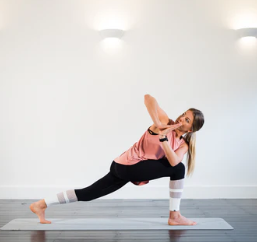In our fast-paced world, it is easy to feel overwhelmed, anxious, or restless. Life often moves at a pace that challenges our ability to remain present and grounded. One of the simplest yet most powerful tools for cultivating inner calm is mindful breathing. This practice, while seemingly basic, has profound effects on both the mind and body, offering a pathway to clarity, balance, and peace.
Mindful breathing is the act of paying deliberate attention to your breath. It is about noticing the sensation of air entering and leaving your body, observing the rise and fall of your chest or abdomen, and allowing yourself to fully inhabit each moment without judgment. Unlike regular breathing, which is often automatic and unnoticed, mindful breathing requires focus and awareness. This conscious attention serves as a gentle anchor, helping the mind to settle when thoughts feel chaotic or overwhelming.
Scientific studies support the benefits of mindful breathing. When we focus on our breath, the nervous system responds by reducing the production of stress hormones such as cortisol. This, in turn, lowers heart rate and blood pressure, creating a physiological state of relaxation. The brain, too, experiences positive changes. Regular practice has been shown to enhance areas associated with attention, emotional regulation, and self-awareness. This means that even a few minutes of mindful breathing each day can improve how we respond to stress and increase overall mental clarity.
One of the most remarkable aspects of mindful breathing is its accessibility. Unlike other wellness practices that may require special equipment or extensive training, mindful breathing is available anywhere and at any time. Whether you are sitting at your desk, waiting for a bus, or lying in bed before sleep, you can take a few moments to tune into your breath. This simplicity makes it a practical tool for anyone seeking calm in the midst of a busy day.
To begin practicing mindful breathing, start with a comfortable posture. Sit or lie down in a position that allows your body to relax without strain. Close your eyes if that feels natural, and bring your attention to the sensations of breathing. Notice the temperature of the air as it enters your nostrils, the gentle expansion of your chest, and the subtle release as you exhale. Try not to control or alter your breath; simply observe it.
As you focus on your breathing, you may notice thoughts, emotions, or distractions arising. This is entirely normal and part of the practice. Instead of resisting or judging these distractions, acknowledge them and gently return your attention to your breath. Over time, this process strengthens mental resilience. It teaches the mind to observe without reacting, creating a space between stimulus and response. This space is where calm emerges naturally.
Mindful breathing can be adapted in countless ways to suit your needs. Some people find it helpful to count each breath, inhaling for a count of four, holding for four, and exhaling for four. Others prefer to silently repeat a calming word or phrase with each inhalation and exhalation. Experimenting with different techniques allows you to discover what resonates most with your body and mind. The key is consistency and intention. Even brief sessions, when practiced regularly, accumulate significant benefits over time.
Beyond immediate stress relief, mindful breathing has deeper implications for overall well-being. It encourages self-awareness by connecting you with your present experience. Many of us live in a state of autopilot, moving through daily routines without fully experiencing them. By tuning into our breath, we reconnect with the here and now, fostering gratitude, clarity, and a sense of presence that enriches everyday life.
Mindful breathing also supports emotional balance. Emotions often arise spontaneously and can feel overwhelming when left unchecked. By practicing mindful breathing, you create a safe internal space to observe emotions without being swept away. You learn to respond thoughtfully rather than reacting impulsively. This enhances relationships, communication, and decision-making, as actions are guided by awareness rather than automatic reactions.
For those new to mindful breathing, it can be helpful to establish a simple routine. Start with just a few minutes each morning or evening, gradually extending the duration as you become more comfortable. You might pair this practice with other calming rituals, such as gentle stretches, journaling, or a brief walk outdoors. Over time, mindful breathing becomes a natural part of daily life, offering a steady source of calm regardless of external circumstances.
In moments of acute stress, mindful breathing is especially powerful. When anxiety spikes or frustration rises, taking a few conscious breaths can instantly shift the body’s stress response. Even three deep, intentional breaths can slow the heart rate, relax tense muscles, and create a sense of mental clarity. This makes mindful breathing an invaluable tool for managing challenging situations at work, in relationships, or during personal challenges.
In addition to its calming effects, mindful breathing encourages a greater connection between mind and body. Many people experience tension, fatigue, or discomfort without realizing the link to their breathing patterns. Shallow, rapid breaths often accompany stress and contribute to physical strain. By observing and adjusting the breath, you promote better oxygen flow, relaxation, and energy distribution throughout the body. This holistic impact reinforces the harmony between physical health and mental well-being.
It is important to approach mindful breathing with patience and kindness toward yourself. Progress is not measured by perfection but by the willingness to return to the breath, moment after moment. Some days may feel easier than others, and that is perfectly normal. What matters is the consistent effort to cultivate awareness and presence, which gradually transforms the mind’s habitual patterns of reactivity into calm and clarity.
The power of mindful breathing lies in its simplicity and universality. It does not require special tools, a specific location, or prior experience. All it asks is your attention and intention. By incorporating this practice into daily life, you nurture inner calm, reduce stress, and develop a deeper sense of self-awareness. Over time, mindful breathing becomes more than a practice; it becomes a way of living—a gentle reminder that calm is always within reach, and peace is accessible in every moment, simply by paying attention to the rhythm of your own breath.
Embracing mindful breathing is embracing the present moment. It is a declaration that, despite the rush and noise of the world, you can return to a center of stillness whenever you choose. Through regular practice, you create a sanctuary within yourself, a place of calm that remains steady regardless of external circumstances. The breath becomes both a guide and a refuge, reminding you that tranquility is not found in escaping life, but in fully inhabiting it with awareness and grace.






